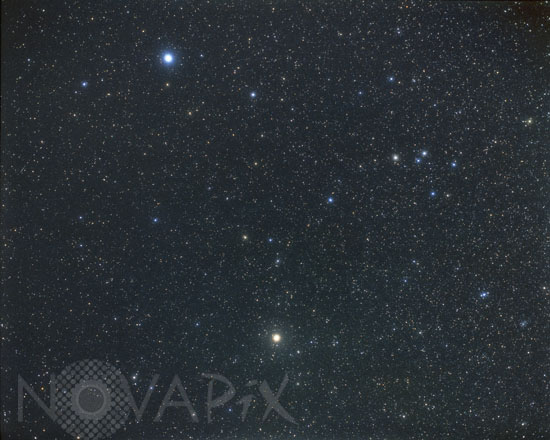Photo Agency - Astronomy - Space - Nature

Constellation of Sextans
author: A.Fujii/David Malin Images/Novapix
reference: a-cst79-00001
Image Size 300 DPI: 51 * 40 cm
Sextans, and part of Hydra. Top of image, the bright star is Regulus in Leo. Sextans, (the Sextant, originally Sextans Uraniae), is small, faint, equatorial constellation south of Leo, framed by the bright stars Regulus to the north and Alphard to the west. It was introduced by Johannes Hevelius in 1687 to commemorate the instrument with which he continued to measure star positions for long after the telescope had been invented. This small and insignificant constellation measures a little more than 17 degrees on a side (about 313 degrees square) and is ranked 45th in area out of the 88 modern constellations. In contrast is the winding collection of stars that make up the head of the Hydra, the Water Snake. This is the largest constellation in the sky, extending over 1300 square degrees, and though the stars that make up the head are rather faint, they are together on the sky and quite distinctive.
Â
Keywords for this photo:
ASTRONOMY - CONSTELLATION - HYDRA - NIGHT - POSTER - REGULUS - SEXTANS - STAR - STARRY SKY -
Contact : Stéphane Aubin +33-(0)9-51-26-53-76
© Novapix - All rights reserved


